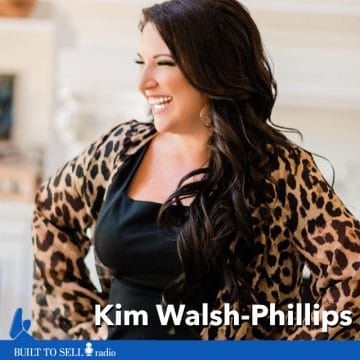About this episode
Kim Walsh-Phillips founded Elite Digital Group, a marketing agency for clients looking to leverage social media. Walsh-Phillips built her firm to $3.2 million in revenue, but she got stuck when she reached 30 clients.
No matter what she did, Walsh-Phillips couldn’t break through the 30 client ceiling.
Frustrated, she decided to sell and, within months, had three offers and sold for $450,000 upfront and a downstream set of payments tied to her company’s performance after she sold it. There’s a lot to ponder in Walsh-Phillips’ story, including:
Protect Your Earn-out: Before selling, Walsh-Phillips had the opportunity to attend an event where Shark Tank’s Kevin O’Leary offered her some sage advice: when structuring a deal that involves future payments (i.e., earn-out, licensing agreement, etc.), make sure you get the rights to financial reports prepared by a recognized accounting firm. O’Leary argued that, since the accounting firm’s reputation is at risk, they are much more likely to provide truthful sales data than an acquiring company motivated to fudge the numbers.
Pick one: Walsh-Phillips tried to run two businesses simultaneously, and whenever she focused on one, the other suffered. Instead of juggling both, she decided to sell one to commit 100% to the other.
Document Your Processes: Walsh-Phillips documented their entire process for working with a new client right down to precisely what they should get from her team on each of their first 90 days as a client. In the end, it was those processes that were a big part of what her acquirer ended up buying.
Walsh-Phillips’ approach to selling her company was unorthodox and certainly not what most professionals would advise, but that misses the point. Her goal was to start another company, and every day she ran her current one was a day she wasn’t building her new business. Having something you’re excited to do next is one of four factors that predict your exit satisfaction. Find out the other three contributors to a happy exit by getting your PREScore™.
Check out the written by John Warrillow on 4 Things To Consider Before Agreeing To An Earn-Out Deal.

About Our Guest
KIM WALSH-PHILLIPS is the founder of Powerful Professional, a business coaching company, and is an MBA-free self-made millionaire. She’s grown an online following of over a million and was recently named “a must-read by those in business” by Forbes Magazine with multiple best-selling books including, The No B.S. Guide to Direct Response Social Media Marketing, with Dan Kennedy and The Ultimate Guide to Instagram for Business.
She’s shared the stage with and coached the top leaders and brands in business including Tony Robbins, Gary Vaynerchuk, Grant Cardone, Kevin “Mr. Wonderful” O’Leary, and Fortune 100 Companies around the globe.


